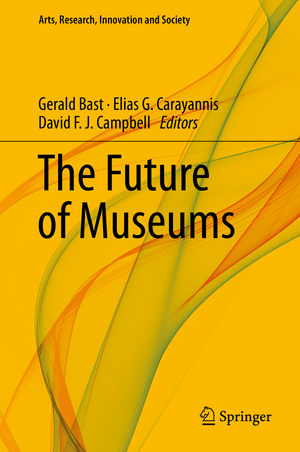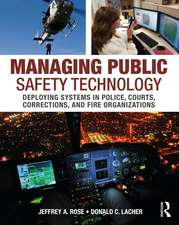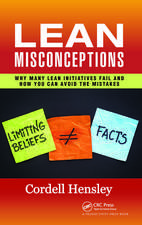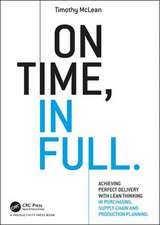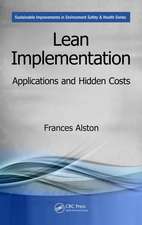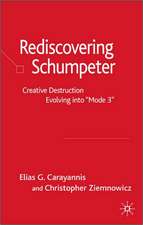The Future of Museums: Arts, Research, Innovation and Society
Editat de Gerald Bast, Elias G. Carayannis, David F. J. Campbellen Limba Engleză Hardback – 11 oct 2018
When you go back to the etymological origin, the Mouseion of Alexandria, it was a place where – supported by the knowledge stored there – art and science were developed: a place of interdisciplinary research and networking, as you would call it today. The word from the Ancient Hellenic language for museum (ΜΟΥΣΕΙΟΝ) means the “house of the muses”: where the arts and sciences find their berth and cradle. With the “Wunderkammer,” the museum was re-invented as a place for amazing for purpose of representation of dynastic power, followed by the establishment of museums as a demonstration of bourgeois self-consciousness. In the twentieth century, the ideal of the museum as an institution for education received a strong boost, before the museum as a tourism infrastructure became more and more the institutional, economic and political role-model. This book is interested in discovering what is next for museums and how these developments will affect art and society. Each of the chapters are written by academics in the field, but also by curators and directors of major museums and art institutions.
| Toate formatele și edițiile | Preț | Express |
|---|---|---|
| Paperback (1) | 1210.63 lei 6-8 săpt. | |
| Springer International Publishing – 29 dec 2018 | 1210.63 lei 6-8 săpt. | |
| Hardback (1) | 1216.65 lei 6-8 săpt. | |
| Springer International Publishing – 11 oct 2018 | 1216.65 lei 6-8 săpt. |
Preț: 1216.65 lei
Preț vechi: 1483.71 lei
-18% Nou
Puncte Express: 1825
Preț estimativ în valută:
232.81€ • 243.57$ • 193.39£
232.81€ • 243.57$ • 193.39£
Carte tipărită la comandă
Livrare economică 03-17 aprilie
Preluare comenzi: 021 569.72.76
Specificații
ISBN-13: 9783319939544
ISBN-10: 3319939548
Pagini: 290
Ilustrații: XII, 152 p. 16 illus. in color.
Dimensiuni: 155 x 235 mm
Greutate: 0.41 kg
Ediția:1st ed. 2018
Editura: Springer International Publishing
Colecția Springer
Seria Arts, Research, Innovation and Society
Locul publicării:Cham, Switzerland
ISBN-10: 3319939548
Pagini: 290
Ilustrații: XII, 152 p. 16 illus. in color.
Dimensiuni: 155 x 235 mm
Greutate: 0.41 kg
Ediția:1st ed. 2018
Editura: Springer International Publishing
Colecția Springer
Seria Arts, Research, Innovation and Society
Locul publicării:Cham, Switzerland
Cuprins
Chapter 1 Introduction: The Future of Museums.-Chapter 2 Changing Societies, Changing Art, Changing Museums.- Chapter 3 Will There Still Be a Future When the Museum of the Future Arrives?.- Chapter 4 Museum Services in the Era of Tourism.- Chapter 5 Manifesto for a New Museum.- Chapter 6 Transforming Education and Labor in a Museum as a Model of the Future: Vacancies in the Future Museum.- Chapter 7 Collecting Piece II [Poem].- Chapter 8 Entering the Flow: Museum between Archive and Gesamtkunstwerk.- Chapter 9 “Media are – first of all – for fun.” The Future of Media Determines the Future of Museum.- Chapter 10 Renewal of the Museum in the Digital Epoch.- Chapter 11 The Museum of the Future.- Chapter 12 Imaginary Bauhaus Museum.- Chapter 13 Conclusion: The Museum of the Future and the Future of Museums.
Recenzii
“The book will be of interest to all museum professionals and non-professionals alike. The book is easy to read and each chapter starts with an abstract providing an overview. … I can highly recommend this future orientated book for anyone involved in museums. … The book was easy to read and very relevant to understanding the changing nature of our society and how this influences leisure demands.” (Sabine Michaela Lehmann, Journal of Tourism Futures, Vol. 5 (3), 2019)
Notă biografică
Gerald Bast studied law and economics at Johannes Kepler University Linz, worked between 1980 and 1999 at the Austrian Federal ministry for Higher Education and Research, responsible for university law and university reforms, been Rector of the University of Applied Arts Vienna since 2000 and was recently re-elected to remain in this position until 2023. As an author and editor, he has published on various subjects of university law and university management, cultural policy and the arts. He is member of the European Academy of the Arts and Sciences,Representative Board member of the European League of Institutes of the Arts, member of the Scientific Advisory Board of "Journal for university law, university management and higher education policy,” and a member of the advisory board of the European Forum Alpbach.
Elias G. Carayannis is Full Professor of Science, Technology, Innovation and Entrepreneurship, as well as co-Founder and co-Director of the Global and Entrepreneurial Finance Research Institute (GEFRI) and Director of Research on Science, Technology, Innovation and Entrepreneurship, European Union Research Center, (EURC) at the School of Business of the George Washington University in Washington, DC. Dr. Carayannis‘ teaching and research activities focus on the areas of strategic Government-University-Industry R&D partnerships, technology road-mapping, technology transfer and commercialization, international science and technology policy, technological entrepreneurship and regional economic development.
David F.J. Campbell is a Quality Enhancement Expert and Quality Researcher at the University of Applied Arts in Vienna; a Lecturer and “Privat-Dozent” in Political Science at the University of Vienna; a Project Manager and Researcher at the Centre for Educational Management and Higher Education Development, Department for Continuing Education Research and Educational Management, at Danube University Krems; and a Fellow (Senior Scientist) at the Institute of Science Communication and Higher Education Research (WIHO), Faculty for Interdisciplinary Studies (iff), Alpen-Adria-University of Klagenfurt. He studied political science at the University of Vienna, completing his studies with a doctoral degree in 1996. In 2014, Campbell received a “Habilitation” (Doctor Habilitatus) from the University of Vienna with a Venia Docendi for Comparative Political Science. His articles on knowledge, innovation, knowledge economy and democracy (knowledge democracy and quality of democracy) have been published in several international journals.
Elias G. Carayannis is Full Professor of Science, Technology, Innovation and Entrepreneurship, as well as co-Founder and co-Director of the Global and Entrepreneurial Finance Research Institute (GEFRI) and Director of Research on Science, Technology, Innovation and Entrepreneurship, European Union Research Center, (EURC) at the School of Business of the George Washington University in Washington, DC. Dr. Carayannis‘ teaching and research activities focus on the areas of strategic Government-University-Industry R&D partnerships, technology road-mapping, technology transfer and commercialization, international science and technology policy, technological entrepreneurship and regional economic development.
David F.J. Campbell is a Quality Enhancement Expert and Quality Researcher at the University of Applied Arts in Vienna; a Lecturer and “Privat-Dozent” in Political Science at the University of Vienna; a Project Manager and Researcher at the Centre for Educational Management and Higher Education Development, Department for Continuing Education Research and Educational Management, at Danube University Krems; and a Fellow (Senior Scientist) at the Institute of Science Communication and Higher Education Research (WIHO), Faculty for Interdisciplinary Studies (iff), Alpen-Adria-University of Klagenfurt. He studied political science at the University of Vienna, completing his studies with a doctoral degree in 1996. In 2014, Campbell received a “Habilitation” (Doctor Habilitatus) from the University of Vienna with a Venia Docendi for Comparative Political Science. His articles on knowledge, innovation, knowledge economy and democracy (knowledge democracy and quality of democracy) have been published in several international journals.
Textul de pe ultima copertă
This book explores―at the macro, meso and micro levels and in terms of qualitative as well as quantitative studies―the current and future role of museums for art and society. Given the dynamic developments in art and society, museums need to change in order to remain (and in some ways, regain) relevance. This relevance is in the sense of a power to influence. Additionally museums have challenges that arise in the production of art through the use of permanent and rapidly changing technologies. This book examines how museums deal with the increasing importance of performance art and social interactive art, artistic disciplines which refuse to use classical or digital artistic media in their artistic processes. The book also observes how museums are adapting in the digital age. It addresses such questions as, “How to keep museums in contact with recipients of art in a world in which the patterns of communication and perception have changed dramatically,” and also “Can the art museum,as a real place, be a counterpart in a virtualized and digitalized society or will museums need to virtualize and even globalize themselves virtually?” Chapters also cover topics such as the merits of digital technologies in museums and how visitors perceive these changes and innovations.
When you go back to the etymological origin, the Mouseion of Alexandria, it was a place where – supported by the knowledge stored there – art and science were developed: a place of interdisciplinary research and networking, as you would call it today. The word from the Ancient Hellenic language for museum (ΜΟΥΣΕΙΟΝ) means the “house of the muses”: where the arts and sciences find their berth and cradle. With the “Wunderkammer,” the museum was re-invented as a place for amazing for purpose of representation of dynastic power, followed by the establishment of museums as a demonstration of bourgeois self-consciousness. In the twentieth century, the ideal of the museum as an institution for education received a strong boost, before the museum as a tourism infrastructure became more and more the institutional, economic and political role-model. This book is interested in discovering what is next for museums and how these developments will affect art and society. Each of the chapters are written by academics in the field, but also by curators and directors of major museums and art institutions.
When you go back to the etymological origin, the Mouseion of Alexandria, it was a place where – supported by the knowledge stored there – art and science were developed: a place of interdisciplinary research and networking, as you would call it today. The word from the Ancient Hellenic language for museum (ΜΟΥΣΕΙΟΝ) means the “house of the muses”: where the arts and sciences find their berth and cradle. With the “Wunderkammer,” the museum was re-invented as a place for amazing for purpose of representation of dynastic power, followed by the establishment of museums as a demonstration of bourgeois self-consciousness. In the twentieth century, the ideal of the museum as an institution for education received a strong boost, before the museum as a tourism infrastructure became more and more the institutional, economic and political role-model. This book is interested in discovering what is next for museums and how these developments will affect art and society. Each of the chapters are written by academics in the field, but also by curators and directors of major museums and art institutions.
Caracteristici
Explores the future role of museums for art and society Addresses the challenges museums face in the digital age where technologies are rapidly changing how artists work and how museums cater to attendees Contributions by academics as well as curators and directors of major museums and art institutions
